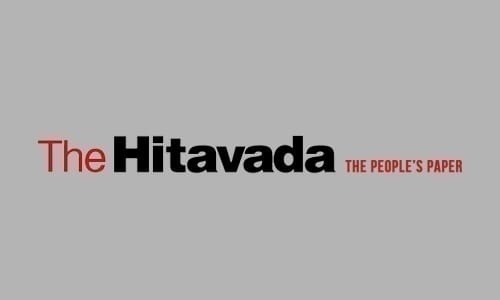Changing Nature Of Wars
| Date :10-May-2024 |

By Lt General M K Das
THE world is already into two years and three months of Russia- Ukraine war. Israel- Hamas conflict is now going on since 7 October 23 for the last seven months, with no immediate end in sight. The latest conflict which is brewing up is between Israel and Iran which witnessed exchange of air power and missiles in the month of April 24. There are other long drawn conflicts in the African sub-continent, not to forget India’s continuous No War No Peace dilemma with Pakistan and with China as well.
The great military strategist and Prussian general Carl Von Clausewitz defined war, sometime in late 1820s, as a mere continuation of state policy by other means. Clausewitz’s theory of war has three key components: defeat the enemy’s army, capture territory and win public support. The military analysts word over and the uniformed community has largely followed this concept of war. On the other hand, conflict is a term used largely in the sub conventional domain which is above the peaceful coexistence and below the threshold of war. The examples are insurgency in the India’s North East and terrorism in the state of J&K.
All types of warfare have continuously evolved over a period of time. But the analysis of war and conflicts in the 21st century is most interesting.
The most visible event was 9/11 attacks in the US by Al Qaeda on 11 September 2001. These attacks changed the face of terrorism forever and the United States led the military campaign called Global War on Terrorism, all over the various conflict zones. Then there was attack on Indian Parliament on 13 December 2001, which almost led to a war between India and Pakistan. Since then and now in 2024, the world is in conflict situation and the current volatility has the potential to graduate into a world war.
The wars have become hi tech and the military technologies have transformed the war into a complex spectrum where physical and kinetic domains of warfighting have taken a back seat. Now cyber, informational, psychological and even economic power dominate the war or conflicts. The future wars are predicted over space. Obviously, the major advanced nations have a clear edge in this form of warfare which has no clear boundaries. The enemy may remain invisible and yet continue to cause damage to the adversary.
Future wars will employ Artificial Intelligence (AI) to enhance the technical prowess in a big way. A large number of nations are investing heavily into the AI to make operations more efficient and less dependent on human intervention. The various sensors would have inbuilt AI tools to quickly take decisions and prove to be force multipliers in navigation, surveillance, aviation and weapon delivery.
The scope is endless and the ramifications may be catastrophic.
The concept of ending a war on favourable terms has also changed. Earlier, once the political objectives were achieved, the war ended. No longer so, as the events of Russia- Ukraine war have proved. Moreover, the war objectives continue to shift the goal post. Therefore, the era of short and swift wars is more or less over. The classical six-day war between 5-10 June 1967, in which Israel defeated Egypt, Jordan and Syria and occupied the Sinai Peninsula, the Gaza strip and the West Bank, East Jerusalem and the Golan Heights is unlikely to be repeated.
The war is no longer being waged between the nations and their Armed Forces. A category of guerillas and mercenaries are also fighting on behalf of nations. In our case, the invasion by tribals in J&K in October 1947, aided and abetted by Pakistan is classical example of this form of warfare. The mercenaries are actively employed today as proven during the Russia- Ukraine conflict, as also by the Hamas.
Another major change is emergence of powerful political leaders who have exploited the armed conflict scenario to further their political cause and survival. The emergence of strongman Vladimir Putin as the Russian President is one good example where his ratings improved even in a long-drawn war with Ukraine. The survival of Benjamin Netanyahu, the Prime Minister of Israel solely depends on the outcome, may be continuation of conflict, in some form or another.
The decline of United Nations, particularly the UN Security Council is also responsible for the confusion in case of war.
The effectiveness of this world body to intervene quickly is a huge question mark now. In addition, the world leaders are classical politicians and hardly there are any statesmen deserving the respect of international community. Prime Minister Modi has gained lot of respect for his deft handling of the international relations. A lot of hope has been generated for him to bring truce in Russia- Ukraine war. The world needs a large number of statesmen like him to bring peace to the humanity.
Indian Armed Forces have been working hard to transform to fight the next war as per the changing dynamics of warfare.
The warfare has become a costly exercise and the defence budget has to keep up with the modernisation plans. More importantly, India has to develop home grown technology to optimise the budget and reduce our dependence on the arms imports. The setting up of defence corridor and healthy participation of the private industry in defence manufacturing is a welcome step.
The salience of conventional war in our context is not yet over. But the dynamics may be very different from the 1962 war with China and 1971 war with Pakistan. Two front war with China and Pak remains a distinct possibility with continuous conflict situation on the borders.
The stand-off with China in the eastern Ladakh for almost last four years is a grim reminder for India to remain strong as a nation to deal with any adversarial situation.